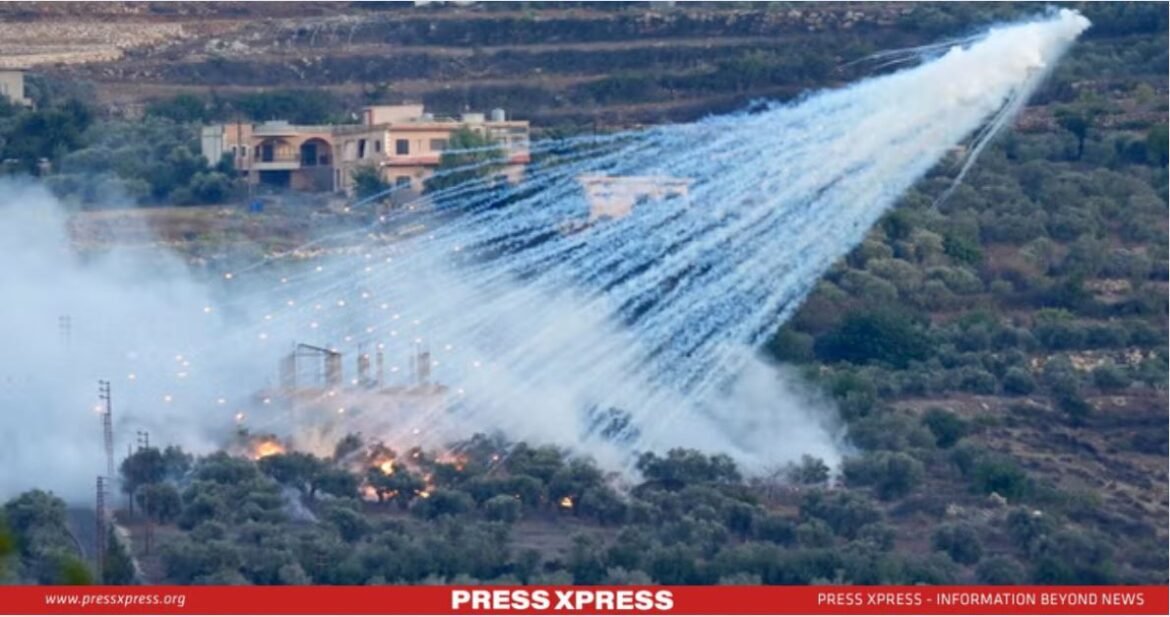- Both Hamas and Hezbollah are backed by Iran and considered terrorist groups by the US.
- Both groups view their conflict with Israel as existential.
- Both emerged in the 1980s as militant movements challenging Israeli occupation.
The Israel-Lebanon border has become a wasteland of destruction and displacement, with northern Israeli communities transformed into desolate ghost towns and southern Lebanon bearing the devastating scars of Israeli bombardment. The human toll is immense, as tens of thousands on both sides have been forced to abandon their homes in search of safety from the relentless violence.
What began as a tit-for-tat exchange following the October outbreak of the Gaza war has now escalated into a far more perilous confrontation. Hezbollah’s record-breaking launch of 900 projectiles into Israel last month alone has been met with intensified Israeli attacks on Lebanon. The Hezbollah leader’s claim of an overwhelming number of volunteers ready to fight Israel ‘without any rules, restraints, or ceiling’ has further fueled tensions. In response, Israel’s northern military command has approved a comprehensive battle plan, raising grave concerns about the potential for a wider and more destructive conflict.
You can also read: Iran-Taliban Talks: Symbolic Alliance or Real Threat?
The specter of full-scale war looms large, despite public statements from both sides expressing a desire to avoid such an outcome. The risk of stumbling into or even deliberately initiating a major conflict has never been higher. While some Israelis believe a potential war could be contained within weeks, experts like Aaron David Miller of the Carnegie Endowment for International Peace warn of potentially catastrophic consequences. These include the outbreak of a major regional war, skyrocketing oil prices, and plummeting financial markets. The combination of uncertainty and high stakes has created a volatile situation that threatens to spiral out of control.

Diplomatic Efforts to Avert Disaster
In an attempt to prevent further escalation, senior US and French diplomats have been shuttling between Jerusalem and Beirut. A proposed plan to end hostilities involves Hezbollah moving its fighters at least 10 kilometers from the border, to be replaced by international forces and members of the Lebanese army. However, Hezbollah insists that the root cause of the current tension is the ongoing war in Gaza, and only a ceasefire there will open the door to border negotiations. This complex diplomatic dance underscores the challenges of achieving a sustainable resolution to the conflict.

Hezbollah’s Military Capabilities
Hezbollah is a far more formidable military force than Hamas, making the potential for conflict even more alarming. Over the past 18 years, the group has assembled an estimated 100,000 fighters and amassed 150,000 rockets and missiles, about half of which can reach major Israeli cities. Israel’s renowned air defense systems could be overwhelmed by a potential Hezbollah assault of 3,000 rockets a day for weeks, especially if joined by other regional militias. This scenario poses a severe threat to Israel’s infrastructure, economy, and civilian population.
- An estimated force of 100,000 men
- An arsenal of approximately 150,000 rockets and missiles
- About half of their missiles can reach major Israeli cities
- A growing collection of attack drones
- Capability to launch up to 3,000 rockets daily for weeks
- Will Israel and Lebanon’s Economies Survive a Full-Scale War?
Both Israel and Lebanon face dire economic consequences if the conflict escalates into a full-scale war. In Israel, GDP growth could plummet from 1.9% to -1.5%, driven by reserve recruitment and disruptions to infrastructure and education. Lebanon, already struggling from a financial meltdown and an economic crisis, would be hit even harder. Neighborhoods in southern Lebanese villages have been leveled by Israeli airstrikes, prompting thousands to flee and further straining an already fragile economy. The Lebanese public, weary of conflict, fears irreparable damage to their country.

International Concerns
The international community is deeply concerned about the potential for a broader conflict. UN Secretary-General Antonio Guterres has warned that a single miscalculation could trigger a catastrophe beyond imagination. The US is employing various tactics to prevent escalation, including slowing weapons deliveries to Israel and using diplomatic channels to exert pressure. However, these measures stop short of promising full-scale support if war erupts. The delicate balance of deterrence and diplomacy highlights the precariousness of the situation.
A Summer of Uncertainty
As tensions continue to rise, experts predict that this summer will be a critical period for the Israel-Lebanon border. While neither side claims to want war, the constant exchanges and escalating rhetoric increase the risk of unintended consequences. Hagar Chemali, founder of Greenwich Media Strategies, notes that despite the current bluster, the situation could easily spiral into something far more serious. The international community watches with bated breath, hoping that diplomacy can prevail over the increasing drumbeats of war in this volatile region.
In conclusion, while neither side claims to desire war, the current trajectory of events suggests that without significant diplomatic breakthroughs, the situation may escalate beyond control. The international community must redouble its efforts to find a peaceful resolution before it’s too late, as the consequences of failure could be catastrophic for the region and beyond.


